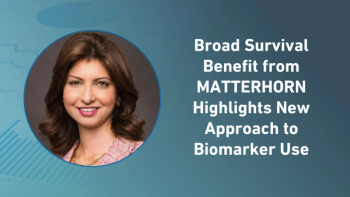
Hands Across the Sea for EU-US GMP
The mutual recognition agreement between the European Union and the US FDA now covers 15 European countries, after Portugal won US recognition in mid-September.
It's refreshing to be able to report some good news in transatlantic relations, against the current rocky background of trade wars and divergent geopolitical stances. The mutual recognition agreement between the European Union and the US FDA now covers 15 European countries, after Portugal won US recognition in mid-September. The agreement provides for participating European countries to recognize inspections of medicine manufacturing sites carried out in the US by the FDA, and for the FDA to accord similar credibility to EU good manufacturing practice inspections in the 15 countries. The deal is proof of the ability of specialists to find some harmony amid a choppy political context. As far back as 2014, Dara Corrigan, then assistant FDA commissioner for global regulatory policy and head of the FDA's Europe office, made clear her view that mutual recognition of manufacturing plant inspections was firmly on the agenda, irrespective of the outcome of the EU-U.S. trade talks then underway. Back then the GMP discussions were taking place in the framework of the Transatlantic Trade and Investment Partnership under negotiation between the EU and the US-negotiations which were already flagging badly even then. But Corrigan was determined. United States. "Yes, it can happen without TTIP", she declared at the time. The concept dates back even further, to 1999, when an EU-U.S. alliance on inspections was agreed, but never came into effect because of divergences over rules on conflict of interest and variability in approach. TTIP may never raise itself from its current moribund state, but Corrigan's words have proved true. Through a step-by-step process of mutual confidence building, which featured numerous exchange visits and observation and audit of inspections, as well as regulator-to-regulator dialogue, a first agreement was reached in late 2017. This specified that the FDA has the capability, capacity, and procedures in place to carry out GMP inspections at a level equivalent to the EU, so EU countries and the European Medicines Agency can rely on those results to replace their own inspections. At the same time, the FDA confirmed the capability of eight EU countries: Austria, Croatia, France, Italy, Malta, Spain, Sweden, and United Kingdom. During 2018, the Czech Republic, Greece, Hungary, Ireland, Lithuania, and Romania were added to the list. The practical merits of mutual recognition of GMP inspections are well-recognized. It offers a degree of efficiency and economy of effort at a time when EU and US companies increasingly source active pharmaceutical ingredients from other parts of the world-boosting the need for inspections there. Reducing duplication within the EU and the US can release capacity to put oversight ability where there is the greatest perceived risk. The scheme is still not complete. Under a transition agreement that runs until July 2019, imported products still need to be batch tested until the FDA recognizes all EU member states' authorities for human pharmaceuticals. The deadline for vaccines for human use is July 2022. And investigational medicinal products will be covered only at a later stage. Until then they will have to be inspected by the FDA. But it stands as a small monument to patient and painstaking work by officials and politicians who have shown the will to see beyond immediate differences and to aim for a more effective future in pursuit of a common interest. It would be even more refreshing to find further demonstrations of such an approach in other areas of medicine regulation. Peter O'Donnell is a freelance journalist who specializes in European health affairs and is based in Brussels, Belgium
Newsletter
Stay current in clinical research with Applied Clinical Trials, providing expert insights, regulatory updates, and practical strategies for successful clinical trial design and execution.





.png)



.png)



.png)
.png)
